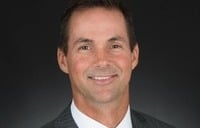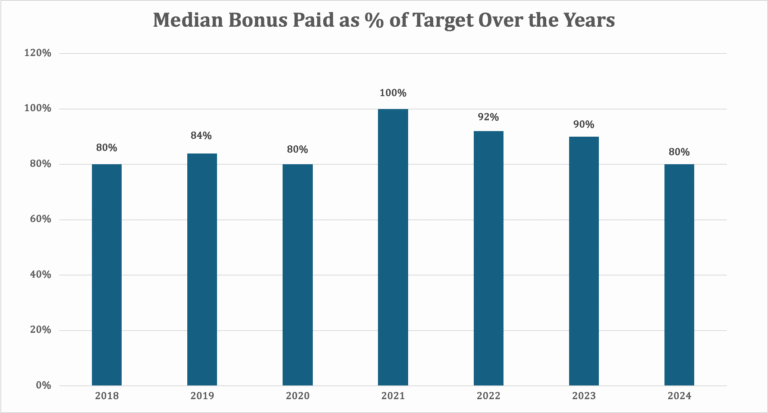

It’s hard for many of us to visualize the good that can come from a pandemic—and the economic and social chaos in which much of the world finds itself. But David Komlos is CEO of Syntegrity, which primarily works with Fortune 500 companies that have “become stuck” at some inflection point, are in trouble or otherwise need help either turning around or finding the path forward.
Komlos calls moments like these “Brody moments,” for Roy Scheider’s character in the movie Jaws; after Chief Brody encounters the shark for the first time, he backs up and says, “You’re going to need a bigger boat.”
“Every organization has these moments,” says Komlos. “It’s when the leader realizes that the trajectory of the current course is not going to end well. The coronavirus pandemic is the mother of all Brody moments.”
But Komlos suggests that the time for identifying potential opportunities the company may be able to seize as things normalize is right now, while the chaos is still in full swing. “The timing for that may seem a little off,” says Komlos, who is the co-author of Cracking Complexity: The Breakthrough Formula for Solving Just About Anything Fast. “But it is the CEO’s role to be thinking both about what are we doing in the here and now to deal with this crisis…and to be looking into the future.”
Komlos shares advice on how to do this in the following interview with Chief Executive.
What are some examples of opportunities a CEO might be able to spot right now?
One of them is, how do we weave into the fabric of the organization some of the really good norms and behaviors that are emerging during the crisis? How do we weave those into the normal operations of our organization when we are no longer in crisis? Some examples are frankness, speedy interactions, very focused meetings, follow through, ability to set priorities comprehensively and quickly. And the ability to change behavior rapidly. Those are not normal norms and behaviors. In fact, we oftentimes practice the opposite, unconsciously. And what this crisis is showing us is not only our capacity to care for one another and not only our capacity to be brave and responsible and on the ball, but also to communicate more effectively and to be really diligent about follow through.
At the same time, the realization for leaders has to be that your pre-COVID priorities you had for the organization—your transformation, your digital strategy, your supply chain and manufacturing transformation—will likely be your post-pandemic priorities, and some of them are going to be acceptably off track. And it’s important to know which ones are okay to be off track. So it’s really important to start planning now and identifying what are those priorities that we are going to have to start to get after and what can we do right now to make sure that we hit the ground running when we are able to get back to normal.
We’re also seeing that, yes, the world took time to get going in terms of responding to the pandemic, but then fairly quickly, organizations and governments got going fairly rapidly and stimulus bills were passed and financial aid and fiscal and monetary policy has been enacted and social distancing and testing has ramped very quickly. You could see the pace at which we’re looking for vaccines and therapies. That is actually quite astonishing relative to how slowly we move in our regular linear day-to-day lives.
It’s really important for leaders to communicate the expectation that, we are witnessing how quickly we are able to move when we all can see that the stakes are high. We now have to borrow and learn from what we’re doing today that’s working so well, enabling us to move so quickly and implement the same things to a certain degree when we’re back to normal.
As a CEO, is that what you’re communicating to employees right now?
Yes. I have a few questions on my dashboard: What are the key priorities? What are we getting after? What are the answers? How are we tracking that and what are the opportunities to be seizing now so that we hit the ground running when we come out of this? And we’re having frank conversations with our employees. People are really smart and my decision has been to, in a very sensitive way, still have a bias around seeing this pandemic as an opportunity for our organization and for the world, frankly, in contrast to focusing solely on the negative impacts, which are undeniable and very painful and very real.
What is an opportunity you’ve seen for your firm or a pivot you’re making?
So our organization, for the last 20 years, has been bringing large groups of people together who are carefully chosen for their talent and knowledge and influence in an organization and around its ecosystem to solve big challenges, to make rapid leaps at Brody moments when they realize they’re going off course and they need to quickly shift. We do that face-to-face because face-to-face is by far the superior mode for dealing with defining moments where things are going off track. Because when you’re together and you’re breathing the same air and you know how to focus on interactions and optimize those interactions between a group that’s together for a couple of days, you can actually make a course correction really, really rapidly.
Well, right now, of course, corrections can’t be made face-to-face, right? We just can’t do that. Even before the pandemic, we were working at a decent pace to look at both our business model and our product set and start talking much more about digital and how we equip organizations to do this for themselves as opposed to having us do it for them each time. So from our perspective, we’re working on two things: How do we accelerate a business model shift to equip the world to do this for themselves, and that allows the world to scale rapid leaps instead of relying on us? And how do we digitize or at least enable remotely orchestrated rapid leaps when we can’t bring groups of people together? So we have transitioned into a sprint-led approach that’s allowing us to innovate very rapidly, all hands on deck, and we’re already going out to customers to see if we can help them run their war rooms and they’re coming to us to ask the same.
So when we exit the pandemic, we’ll have informed a new business model that brings the best of the new world and our old world. And we will have enhanced our product suite to be way more flexible, something that could have normally taken a year or two more years, but a pandemic—or any kind of Brody moment where you realize you’re going to need a bigger boat—if you can make that rapid shift and look at it through the lens of opportunity, you can really move fast.
What behaviors that we’ve learned during this pandemic should we be careful not to take with us to the new normal?
Right now, we are literally shutting down interactions in order to quash COVID, in order to flatten the curve of infected people. So we’re physically distancing, we’re stopping interaction, we’re lowering the number of interactions we have and the variety of people we come into contact with dramatically. That is exactly what you have to do to stem a pandemic. But unfortunately, at the same time, ideas and knowledge and talent and momentum and alignment and great solutions—those are all born out of interactions between people. Creativity is often inspired through deep connection with other people, right? Alignment is born from interacting with other people who share the same beliefs or who come about to believe in something in a common way. So in the same way that we’re intentionally flattening the curve of interactions to quash the virus, we are unintentionally, unconsciously flattening the curve of solutions and great insights and alignment and buy in and creativity and innovation.
We flatten the curve of those things by limiting the number of people we tend to call into meetings or into dialogue with us by not being truly cross functional and interdisciplinary, right? And by shortening meetings to be really, really transactional and brief. As we get back to the norm, we have to practice the opposite of what we practiced here. We’ll have to double down on elevating the prominence of really good interactions between people.
CEOs understand the challenge. Priority setting, to be done with more rather than fewer people and a broad diversity of talent to inform the thinking on those priorities, that’s the way you figure out what to do during a pandemic. At the same time, looking forward, what are the opportunities? Whether it’s enhanced relationships with customers, new business models, new products and services, a new message or expansion into new markets after the pandemic subsides, it is the leader’s responsibility not to take their eye off the ball of the here and now, but also to bear that burden and look at those opportunities while others are fearful and focused on the here and now. That is a burden of leadership, but nonetheless that’s the reality.




Chief Executive Group exists to improve the performance of U.S. CEOs, senior executives and public-company directors, helping you grow your companies, build your communities and strengthen society. Learn more at chiefexecutivegroup.com.
0

1:00 - 5:00 pm
Over 70% of Executives Surveyed Agree: Many Strategic Planning Efforts Lack Systematic Approach Tips for Enhancing Your Strategic Planning Process
Executives expressed frustration with their current strategic planning process. Issues include:
Steve Rutan and Denise Harrison have put together an afternoon workshop that will provide the tools you need to address these concerns. They have worked with hundreds of executives to develop a systematic approach that will enable your team to make better decisions during strategic planning. Steve and Denise will walk you through exercises for prioritizing your lists and steps that will reset and reinvigorate your process. This will be a hands-on workshop that will enable you to think about your business as you use the tools that are being presented. If you are ready for a Strategic Planning tune-up, select this workshop in your registration form. The additional fee of $695 will be added to your total.

2:00 - 5:00 pm
Female leaders face the same issues all leaders do, but they often face additional challenges too. In this peer session, we will facilitate a discussion of best practices and how to overcome common barriers to help women leaders be more effective within and outside their organizations.
Limited space available.

10:30 - 5:00 pm
General’s Retreat at Hermitage Golf Course
Sponsored by UBS
General’s Retreat, built in 1986 with architect Gary Roger Baird, has been voted the “Best Golf Course in Nashville” and is a “must play” when visiting the Nashville, Tennessee area. With the beautiful setting along the Cumberland River, golfers of all capabilities will thoroughly enjoy the golf, scenery and hospitality.
The golf outing fee includes transportation to and from the hotel, greens/cart fees, use of practice facilities, and boxed lunch. The bus will leave the hotel at 10:30 am for a noon shotgun start and return to the hotel after the cocktail reception following the completion of the round.